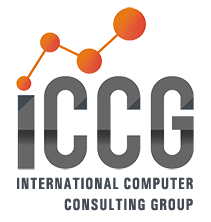As fashion organizations grow to introduce new products or clothing lines, acquire other companies, shift priorities, and change channels to market, key stakeholders can be left out of the conversation. A networked approach to running your company can solve these problems. Collaborative networks work because they engage internal and external partners, workers, and stakeholders, helping to incentivize and execute supply chain processes more effectively than ever before.
New insights will continue to emerge as consumer behaviors shift and production opportunities evolve, but a continuously synchronized and updated network can keep you agile from sketch to store by making critical information accessible to colleagues, organizations, suppliers, and customers. Collaborative networks work to improve customer service, maximize margins, and minimize loss attributed to miscommunications such as missed inventory targets, downtime, spoilage, and other challenges.
Read More
Topics: ERP, Fashion & Retail, Distribution, Supply Chain, Fashion & Apparel, Supply Chain Visibility, Supply Chain Network, Cloudsuite Fashion & Apparel, Infor CloudSuite PLM for Fashion, Infor CloudSuite Fashion PLM, Enterprise Software, Infor CloudSuite Fashion, Supply Chain Operations, Supply Chain Management, Infor CloudSuite M3, Infor CloudSuite ERP
As industry attitudes and consumer behaviors change, so does the challenge of sustaining a business in the fashion industry. The global health crisis has accelerated the need for fashion and retail brand owners to reconsider their current business models to satisfy their digitally native consumers while maintaining omni-channel supply and ensuring sustainable production.
Whether large or small, fashion brands can turn these challenges into opportunities by transforming their business models. How does your organization meet the expectations and desires of today’s digital consumers? Are you still using old technology that might have served you well in the past but is now beyond its shelf life? If you already have an ERP system in place, there’s a good chance it’s no longer able to keep up with your business needs and growth aspirations.
Read More
Topics: ERP, Fashion & Retail, Distribution, Supply Chain, Fashion & Apparel, Enterprise Resource Planning, Fashion PLM, Cloudsuite Fashion & Apparel, Infor M3 ERP, Infor CloudSuite PLM for Fashion, Infor CloudSuite Fashion PLM, Enterprise Software, Infor CloudSuite Fashion, Supply Chain Management
Digitizing core processes in combination with trading partner connectivity, helps supply chain leaders increase responsiveness and adaptability. As more organizations look to remove manual tasks from their operations, the ability to update suppliers and trading partners in real-time allows supply chain processes to become more efficient. Here are three scenarios where moving to a network platform have helped companies generate additional value across their supply chain.
- A footwear provider experiencing rapid growth realized spreadsheets and manual processes were no longer sufficient to support increase demand and future progression. The brand digitally transformed sourcing, procurement, accounts payable, finance, and supplier management processes to support scale. The ability to digitally collaborate on orders, invoices, settlements, and ASN creation was foundational to the transformation. Witnessing 4X growth, the company today has 99.8% invoice accuracy and spends approximately 30 minutes per day processing invoices.
- A major global sports apparel brand sought to solidify the health of its supply base by ensuring access to capital. Utilizing a multi-enterprise network allowed the company to connect all parties and digitized document flow, enabling automated financing and settlement. A diverse portfolio of finance providers was plugged in to create a significant pool of credit and programs to meet varying needs. In doing so, the brand was able to enhance the financial health of its suppliers while deploying its own capital preservation program.
- An outdoor gear manufacturer having automated its PO, invoice, and settlement processes to generate efficiency was seeking further avenues to improve margins. It leveraged existing transaction data to auto-populate ASNs and packing and shipping instructions, enabling direct shipments from the factory. As a result, plans for new distribution center were deemed no longer necessary due to increased efficiency.
Read More
Topics: ERP, Manufacturing, Distribution, Rentals & Equipment, Supply Chain, Fashion & Apparel, Infor M3 ERP, Enterprise Software, Retail Supply Chain, WMS, Supply Chain Management
Know you want to transform but don't know where to start? Want to gain $9-12 for every dollar you spend? Read on to find out why starting with your people is the best first step to prioritizing digital transformation projects.
Digital transformation is at the top of the to-do lists of most companies, but one topic that is often missing from a discussion on digital transformation is which areas to prioritize. Most businesses can’t afford to completely overhaul a core function of the enterprise top to bottom, along with the technology that supports it, at any one time. Instead, they’ll target specific areas for transformation. That approach minimizes disruption to the business, keeps costs manageable, and helps the business apply lessons learned to future transformation projects. The question, though, is which areas to target first?
Read More
Topics: Digital Transformation, ERP, Manufacturing, Distribution, Rentals & Equipment, Supply Chain, Fashion & Apparel, Industrial Manufacturing, Digital Manufacturing, Infor M3 ERP, Enterprise Software, Retail Supply Chain, WMS, Supply Chain Management
Supply chain disruptions caused by black swan events are by nature unforeseeable events that can be utterly catastrophic. Due to their destructive potential, these unfortunate events justifiably draw attention to how critical supply chains are to sustaining business success and essential daily functions. Unfortunately, they also draw attention to how vulnerable supply chains tend to be when faced with sudden adversity.
Studying the kinds of companies that can weather such catastrophes provides many key lessons about how enterprises can implement resiliency solutions and strategies to respond to, and mitigate, the deleterious effects of a black swan event.
There are four key steps enterprises can adopt to ensure that they are able to respond and react with the flexibility needed to minimize the impacts of black swan events and the “ripple” of disruption occurring at numerous levels of magnitude.
Read More
Topics: Manufacturing, Distribution, Supply Chain, Warehouse Management Systems, Enterprise Software, WMS, Supply Chain Management
The modern fashion consumer, often referred to as the conscious consumer, expects more than a transactional relationship with the brands they purchase garments from. They want an authentic, personalized, and seamless shopping journey that reflects the specific context of how and why they choose a brand. These desired brand attributes require control beyond brick and mortar supply and present challenges to the fashion brand’s entire supply chain. A label is no longer reason enough to secure a sale. Customers want to know more about the companies from which they are buying, and have developed more sophisticated expectations around the environmental impact, product sustainability, and circularity that constitutes a modern brand experience.
Read More
Topics: Fashion & Retail, Distribution, Supply Chain, Fashion & Apparel, Cloudsuite Fashion & Apparel, Infor CloudSuite PLM for Fashion, Enterprise Software, Supply Chain Management
When extreme levels of disruption occur, supply chains immediately launch a survival strategy that tends be focused solely on the enterprise, leaving upstream and downstream trading partners to fend for themselves. Whether scrambling to enable remote work opportunities, implement flexible or staggered labor scheduling, or launch multiple capital preservation strategies, organizations have begun employing a variety of strategies to protect their supply chains and weather the storm.
To ensure the health of the overall supply chain network, the urgency to digitize processes and documents that allow both data and capital to be unlocked has become more prevalent than ever—particularly when a complex number of parties, systems, and document across geographical regions and time zones are involved.
Read More
Topics: ERP, Fashion & Retail, Distribution, Supply Chain, Fashion & Apparel, Supply Chain Visibility, Supply Chain Network, Cloudsuite Fashion & Apparel, Infor CloudSuite PLM for Fashion, Infor CloudSuite Fashion PLM, Enterprise Software, Retail Supply Chain, Infor CloudSuite Fashion, Supply Chain Operations, Supply Chain Management, Infor CloudSuite M3, Infor CloudSuite ERP
For years, digitization has been considered an optional strategy by many companies, thus resulting in static and disconnected buyer-supplier collaboration points across supply chains. For many organizations, processes continue to be highly manual across fragmented systems, resulting in inefficient, error prone workflows.
Reliance upon Excel®, email, and phone calls remains common across a staggeringly significant amount of business, thereby resulting in delays, non-compliance, and friction between buyer and seller. Time and resources lost synchronizing simple concepts like purchase order confirmations, negotiation, documentary compliance, and invoice approvals cripples flexibility and agility, all while locking up millions, if not billions in working capital.
Anywhere paper or manual processes exist a lack of visibility follows, leaving missed opportunities to harness real-time supply chain data that optimizes decisions and mitigate risks.
Read More
Topics: ERP, Manufacturing, Distribution, Rentals & Equipment, Supply Chain, Fashion & Apparel, Infor M3 ERP, Enterprise Software, Retail Supply Chain, WMS, Supply Chain Management
When it comes to ensuring supply chain health, there are three key approaches your organization can do to improve processes and build resiliency into your network. Not only will this help you minimize uncertainty during times of disruption, it will also help streamline improvements during times of prosperity.
Supply chain essential #1: Digital documents, data, and settlements
Companies must focus on network connectivity and process automation to drive agility and responsiveness while continually investing in predictive and proactive sense and respond capabilities.
Economic sustainability includes multiple key components starting with digital connectivity and collaboration as the digitization of documents and workflows enables speed and agility. Multi-enterprise collaboration enables strategic programs such as providing suppliers access to capital through a multi-bank network. This helps the entire supply chain endure dynamic liquidity shortages that often stem from a crisis and a period of economic recovery.
Read More
Topics: ERP, Manufacturing, Distribution, Rentals & Equipment, Supply Chain, Fashion & Apparel, Infor M3 ERP, Enterprise Software, Retail Supply Chain, WMS, Supply Chain Management
The competitive landscape of the wholesale distribution industry is fiercer than ever before. With brand-new, internet-based distributors of all sizes seemingly popping up as quickly as mergers and acquisitions are building new distribution powerhouses, the competition just keeps getting more intense. Adding to the mix are an increasing number of manufacturing companies that are selling direct to retailers and offering online shopping options for consumers, bypassing distribution companies entirely. And let’s not forget the impact big box stores and e-tailers can have on the distribution channel as they leverage their purchasing power, large retail networks, and extensive B2C experience.
Of course, no discussion about distribution competition is complete without addressing the elephant in the room, Amazon® Business. With the ability to sell millions of SKUs with flexible shipping options at low price points, Amazon is setting a high bar for customer expectations. Amazon is very good at responding to how buyers buy today by offering a powerful customer experience that uses modern technologies, such as artificial intelligence (A.I.) and data science.
Read More
Topics: Manufacturing, Distribution, Supply Chain, Warehouse Management Systems, Enterprise Software, WMS, Supply Chain Management








.jpg)


